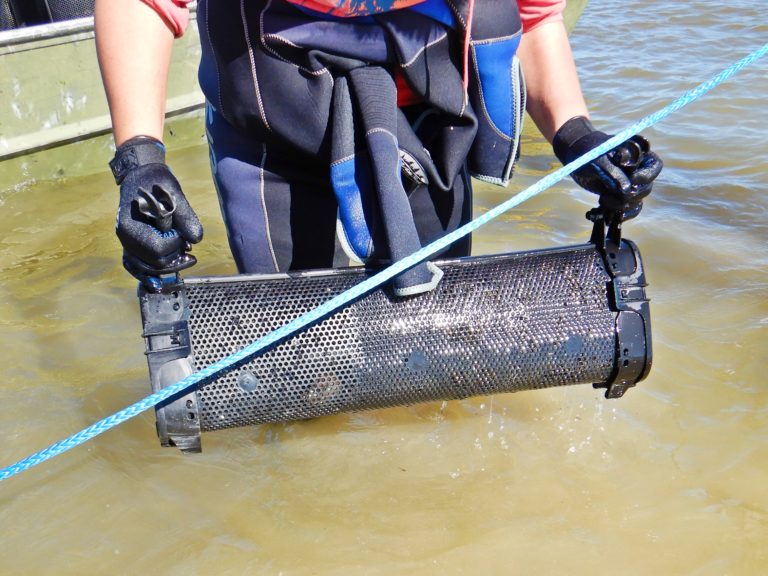New law creates opportunity for oyster aquaculture on Texas coast

At the intersection of legislation and science, a new opportunity for an ecologically and economically sustainable oyster aquaculture industry is being spawned on the Texas Gulf Coast.
For years, Joe Fox, a Texas A&M AgriLife Research scientist with a joint appointment at Texas A&M University-Corpus Christi through the Harte Research Institute, HRI, has been at the center of the oyster aquaculture effort. His involvement has ranged from working with legislative and business leaders to helping draft legislation to investigating different types of oyster cages for use in aquaculture.
“Due to overfishing, excessive freshwater inflow and loss of infrastructure mainly due to hurricanes, Texas oyster harvests have been trending downward and have experienced a 43% loss in the past three to four years,” Fox said. “Oyster aquaculture is a $200 million-plus industry in the U.S. and currently exceeds fishing yields, but Texas was the last coastal state in the nation to allow commercial oyster aquaculture.”
The Texas Legislature recently made commercial oyster aquaculture a real possibility for Texas by passing two bills during its most recent legislative session, Fox said. He cited House Bill 1300 sponsored by Reps. Todd Hunter, Genie Morrison, Dade Phelan, Eddie Lucio and John Cyrier, and Senate Bill 682 sponsored by Sen. Lois Kolkhorst and co-sponsored by Sen. Gina Hinojosa.
“Both bills were strongly supported by Coastal Conservation Association and the Texas Restaurant Association and passed their respective chambers virtually uncontested,” he noted.
The bills will become law on Sept. 1, at which time Texas Parks and Wildlife Department rules and regulations relating to oyster aquaculture will be developed, Fox said. Actual aquaculture production is expected to begin around September 2020.
Fox has received $6.6 million in funding to establish the Oyster Resource and Recovery Center in Palacios for aquaculture, reef restoration and outreach and education starting this fall. He also received $750,000 in funding from the National Oceanic and Atmospheric Administration through the TPWD as part of Texas’ Disaster Relief Funding to establish an oyster farming evaluation project in Matagorda Bay, also slated to begin this fall.
Another effort Fox was involved with was a recent study led by Hugo Magaña, an AgriLife Research associate research scientist at the Texas A&M AgriLife Research Mariculture Laboratory in Corpus Christi. Magaña recently made the first attempt to spawn oysters in a laboratory setting in more than 27 years.
“The ability to emulate the natural spawning of local oysters in a laboratory setting bodes well for Texas oyster mariculture,” Magaña said. “That way there will be no need to collect oysters every year to produce larvae. And these oysters can be retained over their lifespan and produce year after year, providing us oysters with known genetic traits.”

